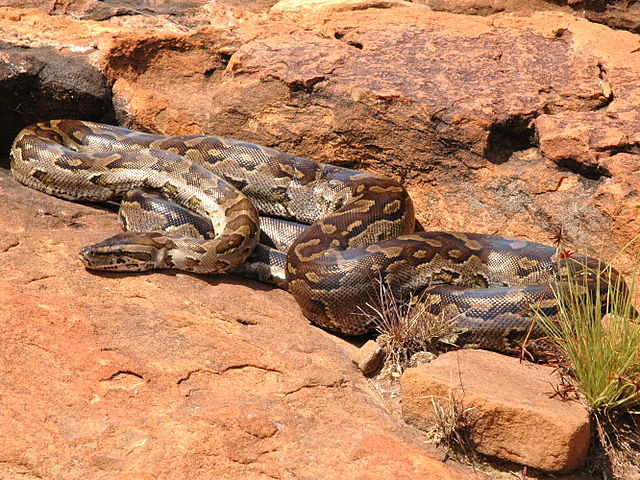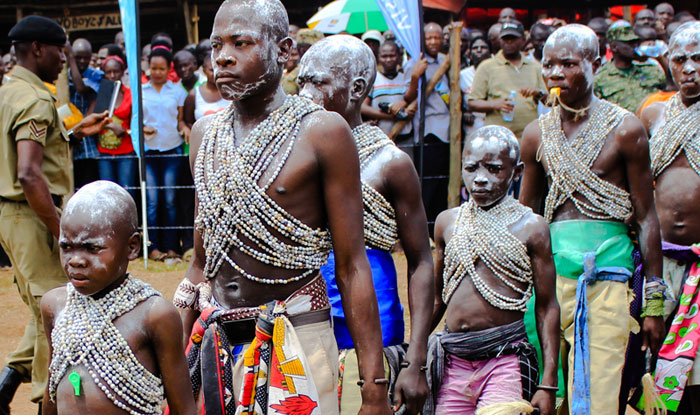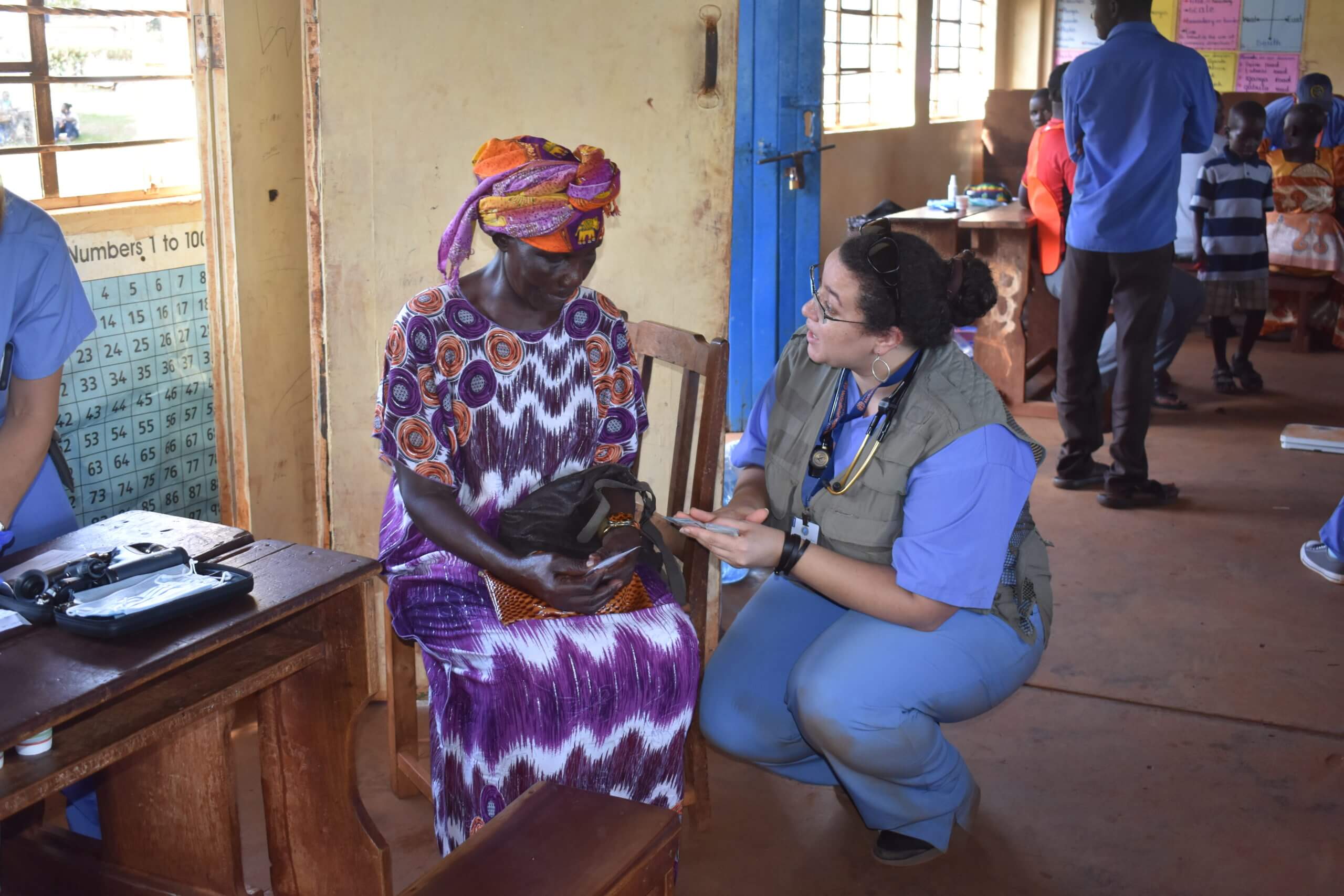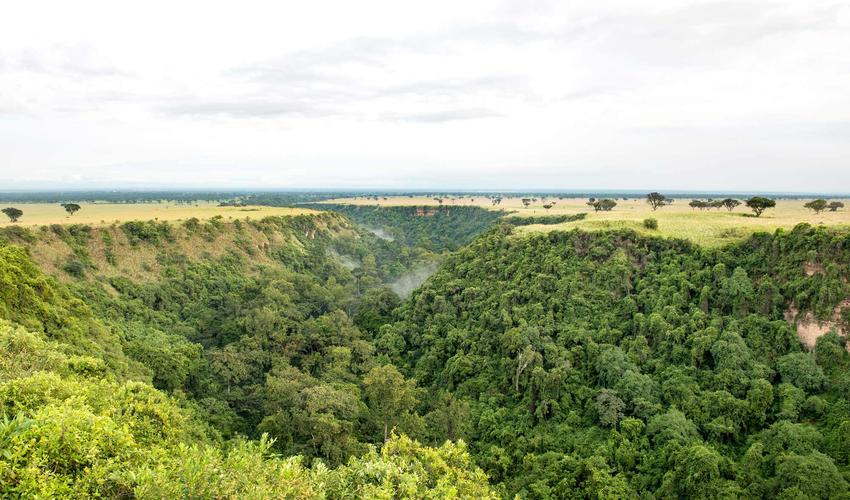Description of the rock python
African tales picture scenes when a large constrictor devours mature livestock and people. We bet they allude to the African rock python. Certainly, this ‘hell of a giant’ is Africa’s largest land-living snake. Heavy constrictor ranges extensively in sub-Saharan Africa save for drier areas and cool mountain elevations. The huge African rock python belongs to the Pythonidae family. Besides, this snake also completes the docket of the world’s largest serpents.
Binomial Name of the rock python: Python Sebae
Scientific classification of the rock python
Kingdom: Animalia
Phylum: Chordata
Class: Reptilia
Order: Squamata
Suborder: Serpentes
Family: Pythonidae
Genus: Python
Species: P. Sebae
Habitat of the rock python
The python / sebae is attracted to staying in evergreen forests and moist open savannahs. These include our own; Kibale Forest and Queen Elizabeth National parks respectively. They also refuge in rocky outcrops purposefully for hiding from danger. Rock pythons also live in other mammal burrows especially in rock areas. Reports indicate these huge snakes also inhabit areas with proximity to water sources i.e. rivers and lakes. It’s reported that a rock python was once sighted at the highest point of 2300 meters (Areste and Cebrian, 2003).
Summer of Habitation of Africa’s largest serpent
Usual Habitation: Temperate, Tropical & Terrestrial
Terrestrial Biomes: Savanna or grassland; forest
Other Habitat Features: Riparian
Physical Description of Africa’s largest serpent
The African rock python has a fairly small triangular head concealed with irregular blackish to brownish-gray scales. Some other two light-colored bands form a spearhead features from the snout to the back of the head. This is seen above its eyes. These serpents have two heat-sensing pits along the supralabial scales on the upper lip. Some 6 more pits can be found along the infralabial scales.
The back is covered with gray-green-yellow-dark blotches that pattern along. White scales fused with black specks run along the belly to form a salt and pepper pattern. Juveniles appear brightly marked than seen in adults (Areste and Cebrian, 2003)
Africa’s largest serpent averages a height range of 3 to 5m. However, some reports indicate that there are much larger rock serpents. Case in point; in Ivory Coast, the African rock serpent was recorded at 7.5m. Certainly, another report indicated the same specimen 9.8m. Their hatchlings average a height range of 35 to 45cm. Adults serpents weigh 45 to 60 kg, some reports indicate some snakes reached a weight of 91 kg (Branch, 1998; McCurley, 2003; Spawls and Branch, 1995; Spawls, et al., 2002)
Reproduction of Africa’s largest python
Africa’s largest serpents breed once every year only. This breeding takes place between November and March. On average 20-50 eggs are laid by a female. Further, the gestation period takes place between 65 to 80 days.
Females reach sexual maturity 3 to 5 years (together with males). And at this time, they have reached a height of 2.7 m whereas 1.8 m is for the males. Both sexes stop feeding during breeding season and females will sustain fasts until hatching of their eggs. Their eggs are large and usually weighing between 130 to 170 grams and measure a diameter of 100mm.
Behavior of the rock python
African rock pythons are solitary and considerably aggressive. They employ an inescapable feeding response and a zealous defense mechanism. They are surprisingly good swimmers and can submerge for long hours. Adults are usually nocturnal but rock pythons can go active all day long especially to bask in the sun.
Juveniles are most active during dawn and dusk. They inhabit hollow trees, rocky caves, and moist open savannah. African rock pythons become docile due to too much handling however these are a poor choice for captive husbandry because of extreme aggressive traits.
Notable Behaviors; solitary, nocturnal, sedentary & crepuscular
Life Span; snakes live up to 30 years in Captivity. However, the average life span is 20 years in the wild.
Communication/voicing of the rock python
African rock pythons have a perfectly developed vomeronasal organ system that is supplied by the tongue. This helps them perceive chemicals i.e. prey orders, and as well as pheromones produced by other pythons.
Conservation Status of the sebae
Little is own but may be threatened due to hunting for leather in some areas.
Predators of the rock python
The main predators are humans/hunters, wild dogs, and Hyenas. Most Adult rock pythons cannot be attacked easily because of their large sizes. However, they become very vulnerable after feeding on large prey. They undoubtedly become sedentary; inactive and easily edible for predator dinner or lunch.
Ecosystems Roles of the rock python
They prey on small to averagely large vertebrates thus control their population.
Pest control.
For a specialized or tailored safari tour in Uganda, send us a mail via info@raksafaris.com or call +256782-061184 to speak directly to our reservations team of experts to make your booking or inquiry.





